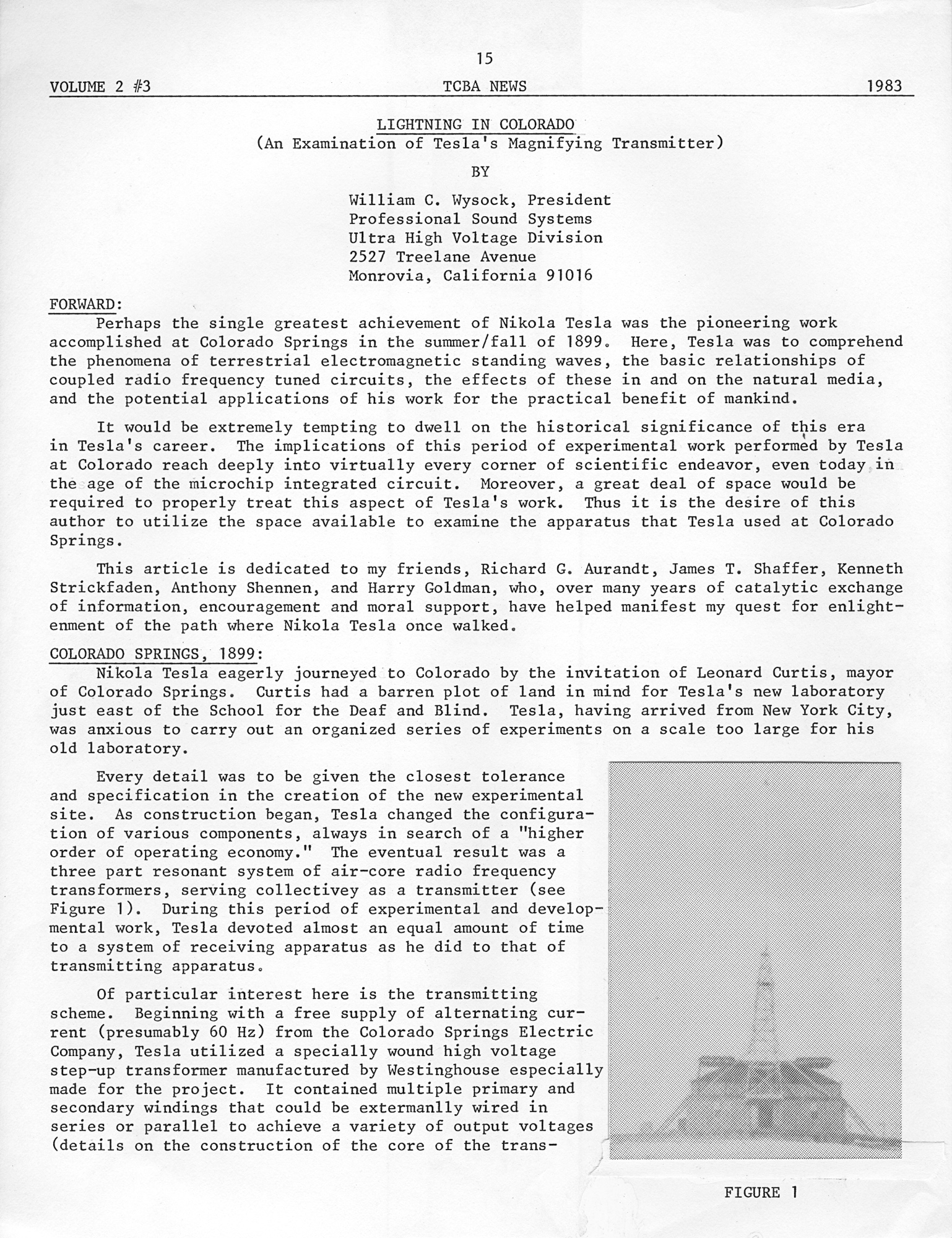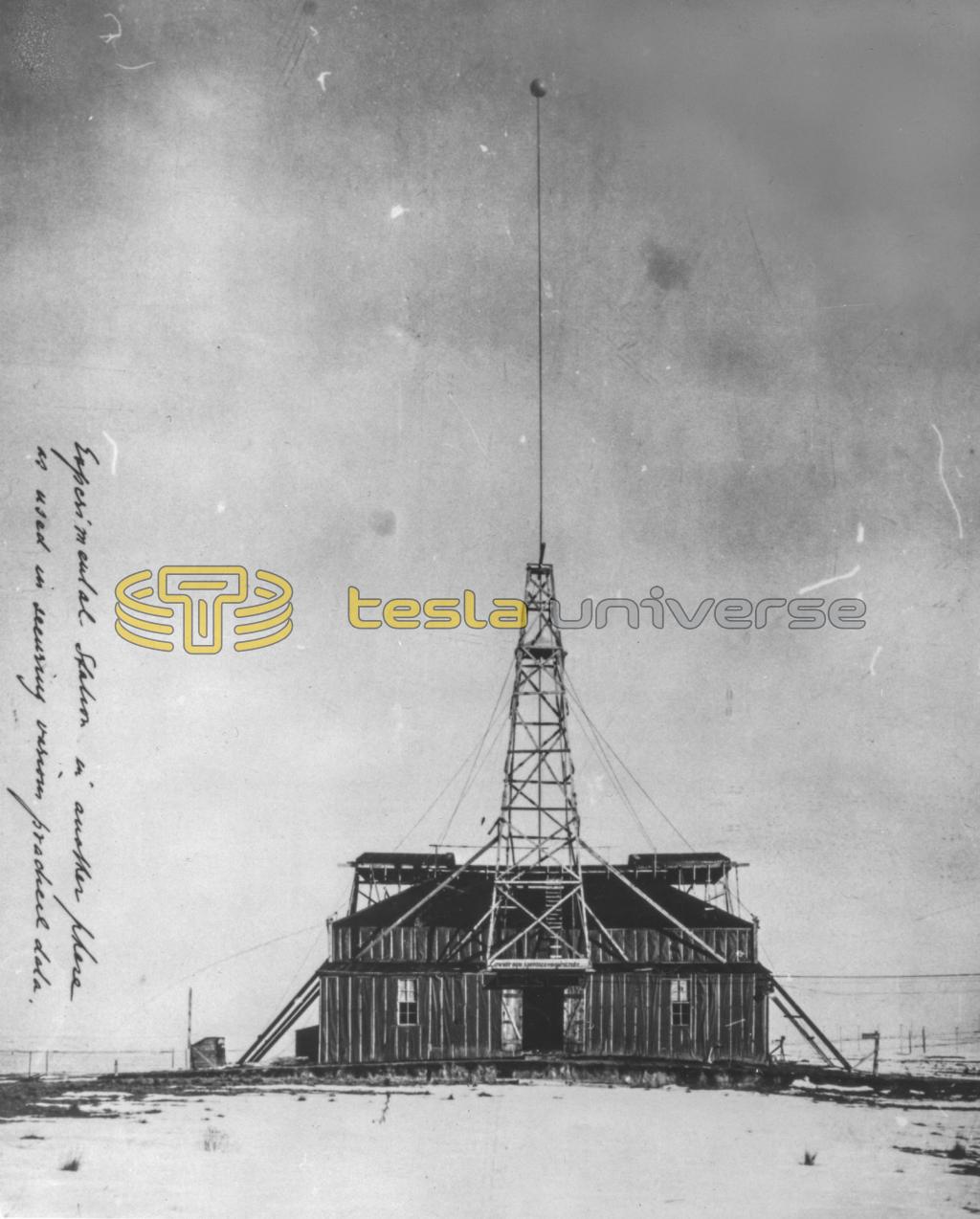Lightning in Colorado
(An Examination of Tesla's Magnifying Transmitter)
By William C. Wysock, President Professional Sound Systems Ultra High Voltage Division
2527 Treelane Avenue Monrovia, California 91016
Forward
Perhaps the single greatest achievement of Nikola Tesla was the pioneering work accomplished at Colorado Springs in the summer/fall of 1899. Here, Tesla was to comprehend the phenomena of terrestrial electromagnetic standing waves, the basic relationships of coupled radio frequency tuned circuits, the effects of these in and on the natural media, and the potential applications of his work for the practical benefit of mankind.
It would be extremely tempting to dwell on the historical significance of this era in Tesla's career. The implications of this period of experimental work performed by Tesla at Colorado reach deeply into virtually every corner of scientific endeavor, even today in the age of the microchip integrated circuit. Moreover, a great deal of space would be required to properly treat this aspect of Tesla's work. Thus it is the desire of this author to utilize the space available to examine the apparatus that Tesla used at Colorado Springs.
This article is dedicated to my friends, Richard G. Aurandt, James T. Shaffer, Kenneth Strickfaden, Anthony Shennen, and Harry Goldman, who, over many years of catalytic exchange of information, encouragement and moral support, have helped manifest my quest for enlightenment of the path where Nikola Tesla once walked.
Colorado Springs, 1899:
Nikola Tesla eagerly journeyed to Colorado by the invitation of Leonard Curtis, mayor of Colorado Springs. Curtis had a barren plot of land in mind for Tesla's new laboratory just east of the School for the Deaf and Blind. Tesla, having arrived from New York City, was anxious to carry out an organized series of experiments on a scale too large for his old laboratory.
Every detail was to be given the closest tolerance and specification in the creation of the new experimental site. As construction began, Tesla changed the configuration of various components, always in search of a “higher order of operating economy.” The eventual result was a three part resonant system of air-core radio frequency transformers, serving collectively as a transmitter (see Figure 1). During this period of experimental and developmental work, Tesla devoted almost an equal amount of time to a system of receiving apparatus as he did to that of transmitting apparatus.
Of particular interest here is the transmitting scheme. Beginning with a free supply of alternating current (presumably 60 Hz) from the Colorado Springs Electric Company, Tesla utilized a specially wound high voltage step-up transformer manufactured by Westinghouse especially made for the project. It contained multiple primary and secondary windings that could be externally wired in series or parallel to achieve a variety of output voltages (details on the construction of the core of the transformer are not clear). Likewise, no reference is made to any current limiting device external to the transformer. A conclusion to this observation may be that Tesla performed power factor control in the Westinghouse transformer solely by adjusting the ratio of capacitive and inductive reactance loading placed on the transformer's high voltage output. Additionally, if it can be assumed that the magnetic core of this transformer was of the saturation type, then by manipulating the individual primary and secondary taps in multiples of series/parallel with either additive or subtractive polarity, power factor correction could have been performed.

